“You are not here merely to make a living. You are here in order to enable the world to live more amply, with greater vision, with a finer spirit of hope and achievement. You are here to enrich the world, and you impoverish yourself if you forget the errand.” —Woodrow Wilson
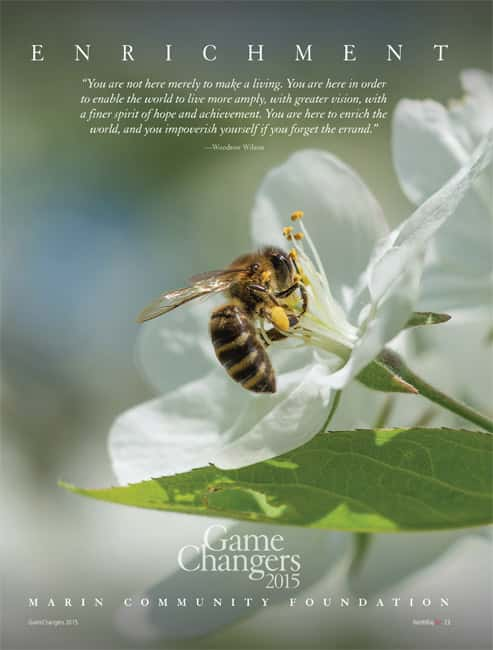 Oil fields, a legendary legal squabble and an old airplane hangar all figure into the Marin Community Foundation’s history. It’s been more than a quarter century since its inception and, since then, it’s weathered controversy and has had some notable ups and downs—but it’s also been at the forefront of some remarkable accomplishments.
Oil fields, a legendary legal squabble and an old airplane hangar all figure into the Marin Community Foundation’s history. It’s been more than a quarter century since its inception and, since then, it’s weathered controversy and has had some notable ups and downs—but it’s also been at the forefront of some remarkable accomplishments.The story starts in 1975, when Beryl Hamilton Buck, the childless widow of Dr. Leonard Buck, died and left an estate of more than $10 million, much of it in Belridge Oil stock, for charitable purposes to improve the quality of life for all Marin County’s residents. Her attorney, John Elliot Cook, entrusted the Buck inheritance to the San Francisco Foundation, based on its record of managing charitable legacies throughout the Bay Area. But in 1979, Shell Oil Company bought Belridge Oils reserves and the value of the stock skyrocketed, changing everything.
With hundreds of millions of dollars suddenly in the Buck Trust’s coffers, the San Francisco Foundation took legal action to overturn the terms of Mrs. Buck’s will so it could spread the largesse to other counties. That action spurred a legal battle with Marin officials, nonprofit leaders, Buck relatives and lawyers and even the California Attorney General’s Office, who banded together to oppose the change. The San Francisco Foundation officials persisted until midway through a trial in 1986, when it became clear they would not succeed in proving that all the charitable assets couldn’t prudently be spent in Marin. The foundation then chose to withdraw its suit and resign as distribution trustee.
The court subsequently ordered the establishment of a new foundation, the first function of which would be to manage the trust. The Marin Community Foundation (MCF) launched operations in 1987 to direct the Buck Trust funds, and one year later, three major projects were selected by the court to each receive a fixed percentage of the Leonard and Beryl Buck Fund’s income in perpetuity. These projects are the Buck Center for Research on Aging, the Buck Institute for Education and Alcohol Justice.
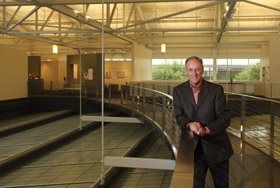 Starting from scratch
Starting from scratch
As a brand-new entity, MCF got off to a rocky start. “It was born out of contention, and it opened with a kind of soup-to-nuts set of expectations and demands,” says Dr. Thomas Peters, current MCF president/CEO, “Understandably, it took some time to get these initial issues resolved.”
In 1998 the MCF board of trustees called on Peters to take the top leadership position and “No one was more surprised than I to get a knock on my door. I thought they were looking for the real Tom Peters—the famous business author,” he says. He was a public health doctor who’d served as chief of staff for a number of his nearly 20 years with the San Francisco Department of Health. In 1991, he moved to Marin to become the county’s director of health and human services. Nonprofit leadership wasn’t in his background, but he was active in the community, had worked for public entities and observes, “Government is the ultimate nonprofit.”
Following seven years as the county’s health director, he accepted the offer to become president of MCF because it gave him the opportunity to address the basic issue of community health from a broad perspective: “It was an expansion of the vision that caught my eye—and has kept me completely engaged—for these nearly 18 years at the foundation,” he says.
During his tenure, Peters has brought stability and cohesion to the foundation, a success the court validated in January 2014 with an order to end its supervision of the Buck Trust. Until then, it had required annual reviews of MCF’s Buck Trust activities and an appointed official to monitor its operations. It took a little more than a year to carry out the various regulatory steps, but the transformation was finalized, and the court’s probate oversight came to a close on May 1, 2015, giving MCF full autonomy. “The court withdrew its oversight with some very complimentary remarks about the thematic and administrative care with which we administer the Buck Trust. It was a important statement on the court’s part,” says Peters.
Fulfilling the mission
Originally housed in an office building at Larkspur Landing, the MCF’s spacious, art-filled quarters are now located in a renovated hangar at Hamilton Landing, a former U.S. Air Force base in Novato. Peters sees restored wetlands along a segment of the Bay Trail from his office window, and the environment, indoors as well as out, is a reflection of how vision can become reality—something that’s at the heart of the foundation’s mission.
Buck funds are paid out in grants to organizations that can fulfill some aspect of the foundation’s mission, as defined by its strategic plan, and are unrestricted except for geographic boundaries. “We don’t have active participation from Dr. or Mrs. Buck or their family, so the board of trustees is the determining board for priorities and allocations,” says Peters.
Trustees look at a broad base of the community’s educational and charitable needs in an effort to decide how to have the most beneficial impact, with an emphasis on education, economic opportunity, health and environment. This is a change from a wider range in the past. Peters explains that the new, narrower focus lets MCF zero in on some of the most critical work that it’s engaged in (or hopes to be engaged in). “We narrowed the breadth of our grant-making so we could go deeper in certain areas,” he says, adding that the board did so under an overall theme: equity of opportunity.
A prime example of the way MCF funding works to provide economic opportunity is the Renaissance Center for Entrepreneurship in downtown San Rafael, which opened in June 2012 with MCF assistance. It’s one of five regional centers in the Bay Area (headquarters are in San Francisco) that has been teaching entrepreneurship since 1985. Training for potential entrepreneurs didn’t exist in Marin County before, even though 30 percent of Marin residents are self-employed, often in second jobs, in keeping with a national trend.
“Most people can’t make ends meet in a single job. It started, really, during the recent recession, when many people couldn’t find full-time work, so they coupled part-time employment with contract jobs, which is, basically, self-employment. We emphasize helping people to be more self-determined in this economy,” says center director Boku Kodama, who explains that California leads the nation in in micro-business job growth (companies with one to four employees), and people need a variety of skills. “You have to be a jack of all trades, because when jobs come from the micro sector, the smallness requires you to wear a variety of hats and have the mindset to do whatever it takes. You have to constantly learn,”he says, adding that the center provides educational opportunities and services that let people succeed. It also offers 100 classes and workshops per year (ranging from a few hours to several weeks in length) and hosts several events each month to foster communication and provide networking opportunities.
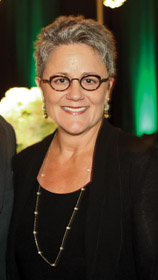 Opportunity is also inherent in the mission of 10,000 Degrees, a San Rafael nonprofit that helps students from low-income homes gain access to higher education and provides mentoring to ensure their success. President/CEO Kim Mazzuca reports that 84 percent of the students 10,000 Degrees assists graduate from college—a success rate far exceeding the national average, which is only 59 percent. Support from the Buck Fund plays an essential role. “The MCF investment has really been a game changer for us,” says Mazzuca, who observes that education impacts families and provides endless possibilities.
Opportunity is also inherent in the mission of 10,000 Degrees, a San Rafael nonprofit that helps students from low-income homes gain access to higher education and provides mentoring to ensure their success. President/CEO Kim Mazzuca reports that 84 percent of the students 10,000 Degrees assists graduate from college—a success rate far exceeding the national average, which is only 59 percent. Support from the Buck Fund plays an essential role. “The MCF investment has really been a game changer for us,” says Mazzuca, who observes that education impacts families and provides endless possibilities.“We’re seeing systemic change,” she adds. “We appointed our first alum [Saul Peña, an investment analyst] as chairman of the board five years ago,” she says, and the current board chairman, Pepe Gonzalez, is a former 10,000 Degrees scholar who’s now principal of Laurel Dell Elementary School in San Rafael. Mazzuca points out that the assistance 10,000 Degrees provides goes beyond the individual to benefit the community, and she’s grateful for MCF’s support. “They’ve helped us build our capacity,” she says. “It’s been a stellar and fruitful partnership.”
While parameters for education, economic opportunity and health (Marin Community Clinics and Coastal Health Alliance are also among the MCF beneficiaries) are well established, the focus on the environment is not yet fully formed. “We’re taking some time now,” says Peters, to meet with Marin’s top environment leaders. MCF will roll out specific areas of grant priorities in the fall or winter. Healthy eating, active living, environment protection and climate change mitigation are among the top priorities, and MCF has provided funds for the Marin Carbon Project as well as support for Marin Organic’s Farm Field Studies program, so school children can visit farms on field trips. “Our goal is to teach them about nutrition and why organic agriculture is important,” says MO’s Executive Director Jeffrey Westman, who reports that 2,100 kids visited farms during the last academic year, and some of them had never before experienced nature.
Countering criticism
Despite its wide range of funding and positive impact, MCF has had its share of criticism from individuals and organizations that believe—and, sometimes, demand— that the Buck Trust should provide more financial support for their areas of interest. Peters is quick to respond to the charges. “It’s just misguided and incorrect: They’ll rely on some reading or interpretation that simply isn’t a valid reference point,” he says, emphasizing that the court and federal regulations have been very clear. “We hear from advocates from many particular causes and interests. The plain and controlling fact of the matter is that the board of trustees is empowered to use its best judgment and best assessment of how to use these allocations from the Buck Trust. I couldn’t be more proud of their consideration.”
Some members of the arts community, in particular, have been vocal in demanding different priorities, but Peters explains that the trustees have chosen to focus on providing access to the arts for youngsters from disadvantaged environments, who have less access to art and culture than other children. “The board allocates substantial funding to programs that reach out to these youngsters. I feel nothing but pride about that decision,” he says. “I’m extraordinarily proud of the arts grant making we’re doing.”
Beyond the Buck
Even if they don’t receive grants, Marin’s nonprofits can benefit from MCF’s services. “We have a top-flight marketing staff,” says Peters, explaining that they give advice and suggestions to organizations that are fashioning material to go out to potential donors, and a “cracker-jack” philanthropic services team helps nonprofit boards think through strategies to attract donors. A financial team advises organizations on the technical and financial requirements a nonprofit must adhere to, and, “Our grants and loans team is in the field and interacting with the program staffs of scores and scores of nonprofit organizations,” says Peters, explaining they share expertise, give perspective and listen to needs. “The Marin Community Foundation is quite thoroughly engaged with nonprofits in Marin County,” he reports.
In addition to overseeing the Buck Trust, MCF manages and invests money on behalf of more than 500 individuals and families with charitable funds and makes grants in consultation with them. The donors advise where the money is to go, and the beneficiaries can be local, national or abroad and have been as diverse as the Mountain Play, St. Jude Children’s Hospital and Heifer International. In some instances, donors identify a field of interest, such as the environment or education, and MCF staff research charitable organizations that are most appropriate. “We have hundreds of families on whose behalf we make grants,” says Peters. “My staff and I work closely with many of these donors, and I’m touched on a weekly basis by their involvement,” he says, adding, “We make a considerable amount, approximately one-quarter of our grant-making, outside of Marin.”
MCF also houses endowment and other specific funds for approximately 70 nonprofit organizations, mostly private family foundations but also some Rotary clubs and other groups. “For example, the Marine Mammal Center has a fund here, and we hold and invest that money on its behalf. When its board requests it, we send money for operating support,” says Peters. “It keeps an organization from having to have the financial and investment responsibilities on its shoulders,” he explains.
All told, it’s a huge endeavor. In 2014, MCF reported $1.6 billion in assets and distributed more than $63 million from the Buck Trust and family and community funds. It continues to honor Beryl Buck’s legacy by doing good work in Marin and farther afield—far beyond what anyone could have imagined in 1975. It’s truly making its mark on the world and, at 28, it’s only just begun.
Mission
According to its website, the MCF mission is to: “Encourage and apply philanthropic contributions to help improve the human condition, embrace diversity, promote a humane and democratic society, and enhance the community’s quality of life, now and for future generations.”
Opportunity
“Two great things about the Marin Community Foundation: They provided funding and just got out of the way. They were nice enough to say, ‘You know what you’re doing,’” says Boku Kodama, center director for Renaissance Marin. MCF also set benchmarks, which the Renaissance Center either met or exceeded, and provided the center with its building on Third Street, rent free, for three years. “It was very generous of them,” he says.
Enrichment
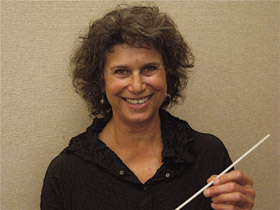 Mill Valley Philharmonic is an award-winning community orchestra made up of volunteer musicians who perform free, live orchestral music to people in communities throughout Marin County and beyond. From 2011 to 2014, the orchestra received three grants from MCF to support audience development efforts.
Mill Valley Philharmonic is an award-winning community orchestra made up of volunteer musicians who perform free, live orchestral music to people in communities throughout Marin County and beyond. From 2011 to 2014, the orchestra received three grants from MCF to support audience development efforts.“MCF gave us three years of funding in audience development. The funding was generous and extremely helpful in developing a successful strategy and fulfillment of our goals,” says Laurie Cohen, MVP director. “One great part of the process was that we met with our arts cohorts every two months. The cohorts sharing experience and expertise was a gift of intelligence and passion on the part of each arts organization’s representatives.”
Trust
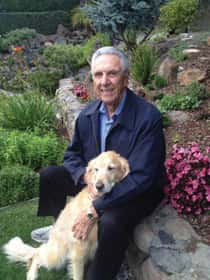 The Marin Community Foundation has managed the Deitz Family Trust for Jim Deitz of Tiburon for the past five years. “I’ve always been satisfied with its management of the trust assets,” says Deitz. “It’s very easy to designate contributions, and MCF follows up admirably on them.”
The Marin Community Foundation has managed the Deitz Family Trust for Jim Deitz of Tiburon for the past five years. “I’ve always been satisfied with its management of the trust assets,” says Deitz. “It’s very easy to designate contributions, and MCF follows up admirably on them.”He points out that donations are tax-deductible at the time they go into the trust, which earns income each year, and MCF sends checks and writes letters to individual charities as needed. “As part of my will, I’ll be establishing a special trust with MCF that will be controlled by my children,” Deitz adds.
Strategy
In its prior strategic plan, the Marin Community Foundation identified four strategic initiatives for funding from the Buck Trust.
Closing Education Achievement Gap: $6,392,957
Example: Support for the Marin County Office of Education’s Early Childhood Education Quality Improvement Project.
Ending the Cycle of Poverty: $2,561,500
Example: Support for Homeward Bound of Marin’s ending-the-cycle-of-poverty and workforce-development programs.
Increasing Affordable Housing: $10,379,457
Example: Support for implementation of California Human Development’s Farmworker Housing Program.
Arts and Culture: $1,256,646
Example: Support for Bread & Roses for audience development and live music performances for isolated and institutionalized residents.
Source: Grants Made in FY14 under MCF’s 201-2014 Strategic Plan
Success
The Buck Institute for Research on Aging in Novato is one of the world’s foremost centers for research into the diseases of aging, and it conducts groundbreaking research into finding ways for people to live longer in good health. It was originally a component program of the Marin Community Foundation but is now independent and receives most of its income from federal grants. “It had to go through regulatory changes to spin off into a great subsidiary to stand on its own,” says MCF President/CEO Dr. Thomas Peters. “We’ll continue the Buck Trust grants, but it’s now structurally independent.”
Art
Four curated art shows per year make the Marin Community Foundation’s offices into a veritable gallery. The current show, “Black Artists on Art,” features the works of more than 50 African American artists from three generations, including Dr. Samella Lewis, America’s leading historian and collector of black fine art. The exhibit is open to the public, 9 a.m. to 5 p.m., Monday through Friday, until September 25, 2015, at 5 Hamilton Landing, Suite 200, Novato.
Education
The Marin Community Foundation partners with Marin County Office of Education to fund and oversee the Early School Success Initiative. Four districts and 10 schools within the Novato Unified, Shoreline Unified, San Rafael City Schools and Sausalito Marin City school districts participate in a research-based pre-K-3 initiative to close the achievement and opportunity gap for students in poverty, English language learners and children of color. Thirty-eight preschool classrooms participate through alignment of best practices, professional development, common assessments and program evaluation. Partnering with parents is critically important, as they’re the child’s first teachers, along with educational partners who engage in extended learning and services in our communities.
MCF has funded national experts to provide exceptional professional development, including equity, common core standards, pre-K frameworks and foundations, alignment of researched based instructional practice, English language arts, mathematical practices and social emotional development. “Early Childhood Education is a top priority in Marin. How fortunate for our entire community,” says Jan La Torre-Derby, pre-K-3 early school success director for Marin County Office of Education. “We’re truly creating systemic change to create a seamless pre-K-3 aligned delivery model.”



